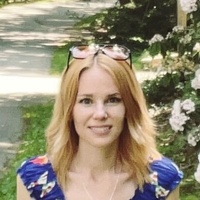On creating honest work
Prelude
Courtney Hassmann is a ceramic artist in Albuquerque, New Mexico. She pinches pots, cries a lot, and loves her pets to death.
Conversation
On creating honest work
Ceramicist Courtney Hassmann discusses protecting vulnerability, the process of letting go and the importance of finding new ways to have fun.
As told to Jess Shoman, 2633 words.
Tags: Craft, Art, Process, Identity, Inspiration, Focus.
What initially started your curiosity in working with clay?
It had always been something I had done because I was always in art classes growing up. Then I went to the University of North Texas, for graphic design. I got there and I realized I hated it a lot. I wasn’t a computer person, and I did not enjoy the process of making things on the computer. I had a substitute teacher for one of my design classes, and he was a grad student in the ceramics program and he was talking about it and I was like, that sounds like the complete opposite of what I’m doing right now and very much more fun, so I’m just going to switch to that. And then I switched my major before even taking a class, and that was it.
A lot of your pieces have illustrations and words etched into them. What’s your process like collecting and piecing together all of those different fragments that you include on each piece?
Yeah, it’s definitely very much a piecing together of fragments. I am a notes app person where things pop into my head and I put it in my notes app and I literally have 500 notes in this folder of words. It’ll be just little fragments that I think of throughout the months leading up to glazing and decorating all the pieces. I have a little sketchbook that I try to draw in periodically throughout the two months. Then I sit down with all of my work after I’ve bisqued it and I just pick and choose from the words and the drawings and match things up in an interesting way that makes sense to me. It’s a big collaging process.
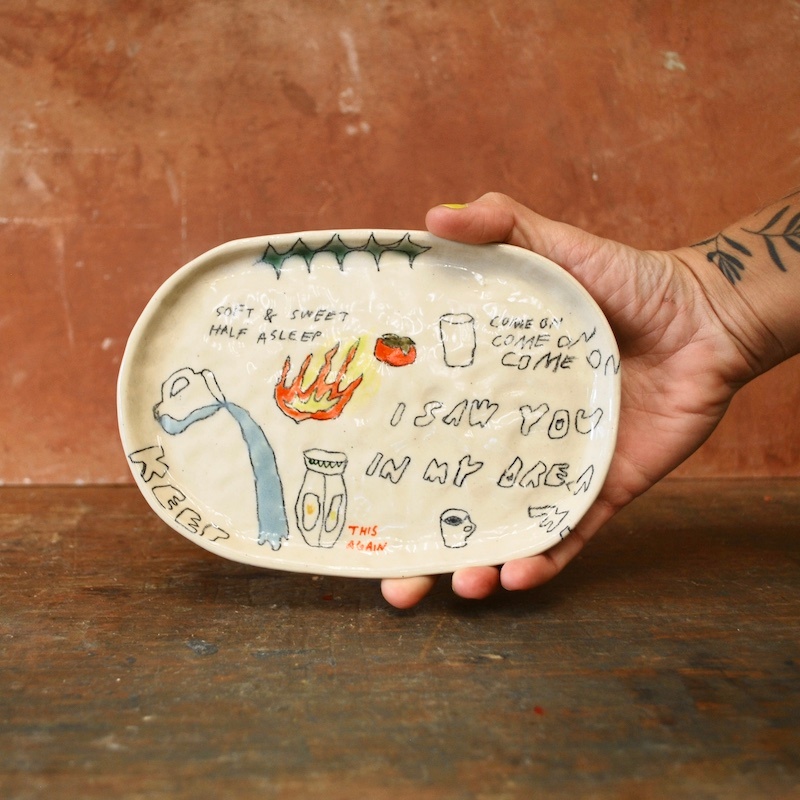
It must be fun to be able to puzzle piece everything together.
Yes. I love it. It’s the most fun part, just going back through everything and making it make more sense than just a little fragment of a thought that I had.
There was one piece that I saw recently on your Instagram. It’s this mug that’s titled, “Hoping The Birds Will Come.” I’m a birder, so I’m a sucker for anything bird related, but I really like the line that reads, “You can tell when it works. It feels like it always does.” There’s something very special about the fact that you are making these everyday objects, but lifting them up in this poetic way. Could you tell me more about what that type of interaction feels like for you as far as making functional art in a way that feels a little more poetic?
I’ve been thinking about that a lot recently because I’ve been trying to do work on paper and it just never feels quite the same. What I love about putting these things on functional work is that it’s almost like a little bit of protecting myself. Not that it’s less important that it’s on a functional piece, but it’s kind of hidden in a way. If you draw something and write emotional words on it and hang it on a wall, obviously that’s super important and meaningful, but I feel like putting it on mugs and stuff. It feels a little more hidden and a little bit more of a secret. Like, oh, there’s something else to do with that other than display it. So it feels a little bit like I’m protecting my own vulnerability because it has something else to do. It’s like when you’re sitting, talking to someone, and you have something to fiddle around with in your hands or something else going on that can take a little bit of the attention away, which feels nice and also interesting.

You quite literally have to interact with it in a different way. You can only see one side of it at a time.
Yeah. I also love not everything being seen at once.
I have a somewhat trippy question. What does it feel like knowing that people are holding your thoughts in their hands? Have you thought about that ever?
I don’t think about that that much. It is a little trippy, it’s weird. The way that my process and the cycle of it goes is I make all these things and I sit with them finished for a day max, and then they’re all gone. I kind of love that. I release them and they’re gone.
Are they out of mind as soon as they’re out of your studio and in someone else’s possession?
Pretty much. I’ll go back and look at my Instagram feed or pictures of my work when I’m making the next round, but only to find stuff that I liked that I kind of want to do again. So yeah, once it’s gone, it’s someone else’s and it’s not mine anymore and I like that.
I feel really drawn to your pieces because they feel very honest and unfiltered in a way that feels really genuine. Is there a specific way that you feel like you harness that type of feeling in your work?
I do very much focus on what I want my work to be and not what I think people will like, which I think helps it feel honest and unique. It’s also very emotional. I love to keep things super vague to where you can’t really tell what I’m talking about, but there’s a lot of big feelings in a lot of the words that I put on things. And I do like it to be vague to where people can attach their own meaning onto it.

I often find myself romanticizing objects that are imperfect. Something else that I like about your pieces is that you can see all the fingerprints and see the waviness of the rims. It doesn’t have to be perfect to be this beautiful object. Can you talk a little bit about how you embrace and leave room for those types of imperfections?
I love imperfections. I think that’s the core of what all of my work is about. Because I always want my work to be technically good and well made and very functional. I always have to balance out the imperfections, like which imperfections would hinder this from being as functional as it could be and which ones to keep so that it’s still well made, but in a unique and imperfect way. I really love deciding which mistakes are worth keeping and which ones need to be fixed. I’m thinking about every little piece of it.

Do you feel like you have created guidelines for yourself? I read in one of your posts that you’re trying to “break the rules you made up for yourself.” Do you feel like you have rules that you’ve created that limits you in a way?
Yeah. I always feel like I have a set of rules for a period of time, and then I outgrow them and decide that I need to change things because I hate feeling like I’m making the same thing over and over. But, I will get in a routine of like, okay, every handle should look this way and every mug should be this same shape. Then I kind of snap out of it and I’m like, okay, wait, I’m making this up. There’s no reason for me to restrict what this could be by making up these rules for myself. No one’s making me do this. So I like to just go back in and check in with myself and ask, “Well is this still how I want this to be?” Because it’s really easy to just zone out and just keep doing what has been working. So yeah, it will mostly be just little things like the shape of the mug. I am branching out a little bit, and those things that most people won’t notice that much.
Do you feel like there’s a demand for you to make things in a certain way or make certain types of pieces?
People always want mugs, and that’s the majority of it. As long as I make enough mugs, I kind of am like, “Okay, I need the majority of this batch of work to be mugs that I will draw and write on, because that’s what most people are coming to me for.” As long as I have enough of those, then I just do whatever else I feel like.

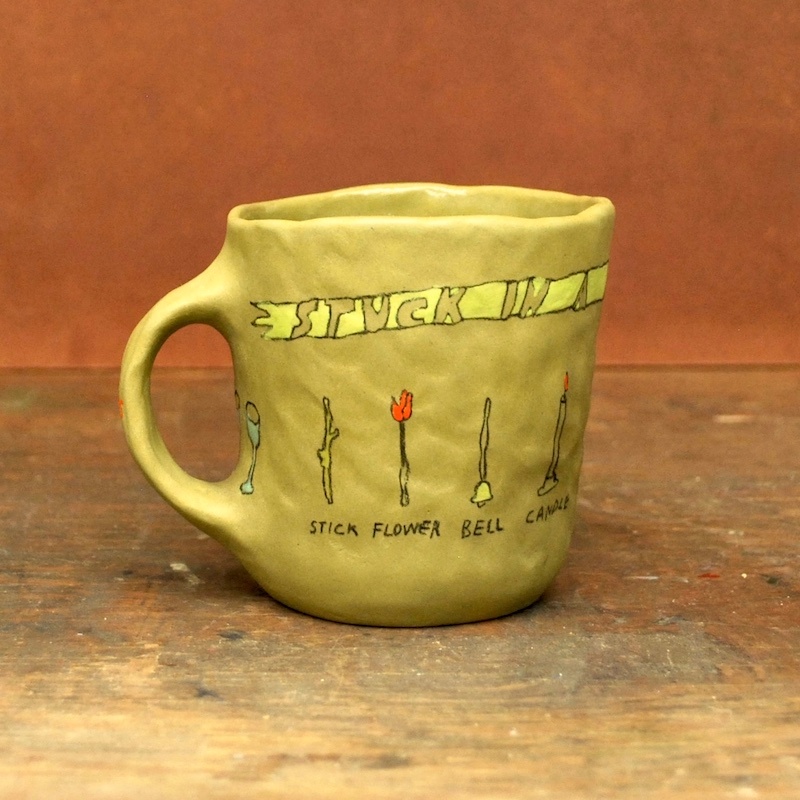
How do you preserve your love for making the art that you like to make while still selling it to people?
Well, I feel like selling it to people is very important for me to be able to make the work, because it’s got to go somewhere. I think part of my process is letting go of the pieces, and so I always want to be able to sell them for sure, of course. I need to make money, duh. But luckily, what I love making and what people love buying aligns, so I’m very fortunate in that. But I also make sure that I’m having fun by doing new processes. I’m doing some new pattern stuff with colored clay that has no drawing and no writing on it, and people aren’t as into it, but I’m still going to do it because I have to, because I like it and it’s really fun. It helps to have the balance of, okay, I’ll do a certain number of those [colored clay and patterned pieces] and then the rest I’ll do the drawings and the writings and stuff. That helps me stay in love with doing it and having fun.
I feel like sometimes it’s hard to get into the mindset that you have to ask for what you need as an artist. You have to do what you need to stay afloat creatively.
Oh, yeah. It’s so easy to get burnt out doing this.
This is how you make a living now, right?
Yeah.
That’s crazy.
It’s insane.
How did you get to that point?
It’s not very interesting, I guess. Circumstances just worked out as I was teaching for an after school arts program and then I got furloughed from Covid, and then everyone was at home on Instagram looking for things to put their coffee in because they’re home now. There was just this big boom of people buying handmade stuff, especially handmade ceramics. And yeah, I was in the right place at the right time and then I was able to continue throughout being furloughed. I was able to continue making stuff and then I just didn’t go back to my job and I just kept making work.

It was a blessing in disguise.
Yeah. It always feels so weird, what a terrible thing that was happening. And it’s still happening, but it started my whole career. It’s very weird.
I feel like a lot of people I know who are running their own business kind of were in a similar situation. They got let go from their job and they had to sink or swim.
Yeah, exactly.
Which is scary, but sometimes you need the final push, I guess.
Yeah. I’m not sure that I would’ve had the confidence in myself to do it without basically being forced to.
You have a Patreon where you offer different membership levels and one of the tiers is where you show people how to pinch pots. What feels important to you about skill sharing in a way that feels accessible to others?
I really like the Patreon model for skill sharing because it’s set up with the tiers and everything and I am just filming in my own space and nobody’s having to come to me. It feels like I can keep the price of it accessible for people and people can watch it on their own time. It feels very free and easy. I like the different tiers and being able to keep the cost lower as opposed to teaching an in-person workshop.
Do you feel like sharing your art on the internet de-romanticizes the process of sharing your art? Or do you like that aspect of it?
I love it. I love that people can still appreciate my work without having to buy it because ceramics are expensive to make, so it tends to be an expensive thing to buy a handmade mug. Not everyone can afford that. I love that there’s this whole catalog, that even though my work is functional and they’re mugs and stuff that’s meant to be used, it’s also very visual and you can still appreciate it by just looking at it. So, I love that part of it.
Do you feel like you interact with everyday objects differently since before you started your practice?
Definitely, yeah. I am very intentional about things that I purchase for myself and I’m much more picky about things that surround me in my home. Also, my mug collection is crazy. I hate if I’m staying somewhere, like an Airbnb or something, or even a friend’s house, and it really bums me out if I don’t have a mug that I like to use in the morning. It throws off my whole day.
You’re going to have to start bringing mugs with you everywhere you go.
I actually just went on a little vacation to a cabin and I knew I needed to bring a mug because I was going to be there for 10 days. Then I forgot the mug and I had to use this awful World Market mug and I was sad.
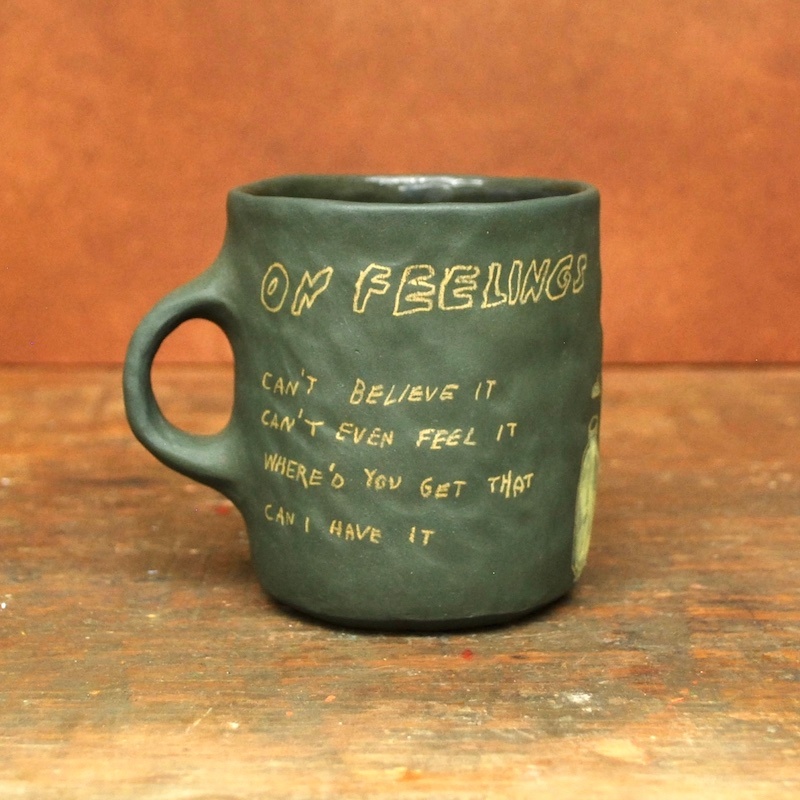
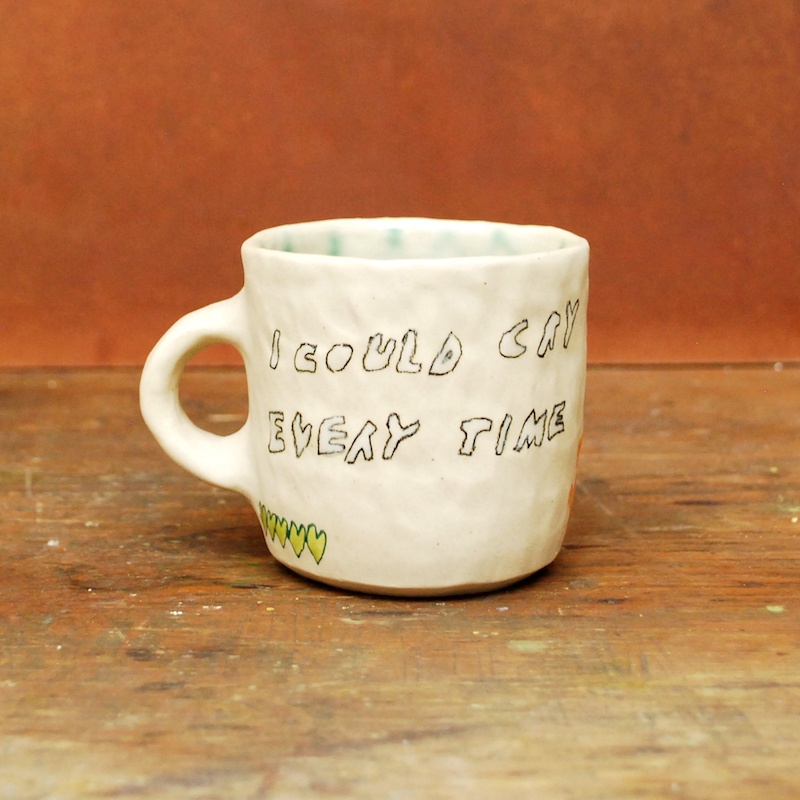
What has been the most surprising thing that you’ve learned along your creative journey?
The most surprising thing I’ve learned is that I will eventually hate everything that I’ve made, but I mean it in a way that I love getting better at things. I change a lot and with each round of my work, I feel like I get closer to what I actually want it to be. So then I’ll look back on past work and be like, “Oh my god, that’s terrible, I hate that.” So I think just the rate at which I change and get better has been very surprising, and how much I don’t like something that I really was proud of.
It’s just a part of the process of growing and changing.
Yeah. It’s a positive thing, even though it sounds weirdly negative. Sometimes people will share a really old mug of mine and it’s like a jump scare. Oh no, I did that?
Courtney Hassmann Recommends:
First Two Pages of Frankenstein, by The National. I want everyone to love The National as much as I do. Their new album has been on repeat while I’m drawing. Listen to I Am Easy To Find (and watch the accompanying film by Mike Mills) while you’re at it.
Speaking of Mike Mills, his movie, C’mon C’mon. Like a hug, and a punch in the stomach.
Hiking with your dog – nothing better than this
Ballpoint pens – underrated
Pickled strawberries – sounds weird but so perfectly sweet and sour
- Name
- Courtney Hassmann
- Vocation
- ceramicist
Some Things
Pagination

